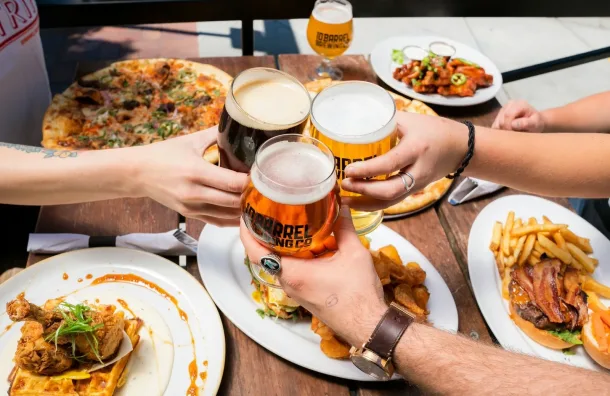
Raise a Glass: It’s Oktoberfest Season!
When you see “Oktoberfest” on a beer label or tap list, you might think it refers to a specific style of beer. But the truth is a bit more nuanced. Let’s dive into the history and explore the differences between the classic Oktoberfest lagers.
A Celebration of Love, Lager, and Horse Racing
Oktoberfest traces its origins back to the royal wedding of Crown Prince Ludwig and Princess Therese of Saxony in Bavaria in October 1810. The celebration, open to all Munich citizens, was filled with drinking, feasting, and even horse racing. It was such a hit that it became an annual tradition.
Around 1870, Märzen became the beer of choice at Oktoberfest, but in the late 20th century, a shift toward a lighter, crisper lager known as Festbier began. Today, both Märzen and Festbier make up the world of Oktoberfest lagers, though the distinctions between them can be a matter of debate.
The Technical Breakdown
According to the Beer Judge Certification Program (BJCP), Märzen is “an elegant, malty German amber lager with clean, rich, toasty, and bready malt flavor, restrained bitterness, and a dry finish.” Festbier, on the other hand, is “less intense and less richly toasted than a Märzen.” Märzen tends to be darker, richer, and slightly higher in alcohol, while Festbier is lighter and more sessionable, designed for long days of celebration.
However, not everyone sticks to these definitions. American brewers often blur the lines, interpreting the styles in their own ways.
Brewers Weigh In
Take Hagen Dost, owner and brewer at Dovetail Brewery in Chicago. His Festbier pushes the boundaries of what the BJCP defines as Märzen. Brewed in March and lagered all summer, Dovetail’s Festbier has a hearty body, a touch of caramel, and a slightly darker hue than most Festbiers. For Dost, it’s about capturing the feeling of fall rather than rigidly adhering to style guidelines.
John Haggerty, brewmaster at Warped Wing Brewing Company in Dayton, Ohio, echoes this sentiment. His Oktoberfest lager, Lagerstadt, blends the characteristics of both Märzen and Festbier. Haggerty’s focus is on maintaining a balance that allows for easy drinking, a key feature for any beer meant to be enjoyed in large quantities.
Finding Common Ground
Michael Toomes, head brewer at Chuckanut Brewery in Washington, crafts both Märzen and Festbier each year to showcase their distinct differences. He emphasizes that Märzen leans heavily on the malt bill, with hops playing a supporting role, while Festbier’s simpler malt profile allows hops to shine a bit more.
The Bottom Line: Taste for Yourself
Oktoberfest is what a brewer makes of it, and the only way to truly understand what’s in your glass is to taste it. Whether it’s Märzen, Festbier, or something in between, these beers are all about celebrating the season. Visit your local brewery and enjoy whatever version they have on offer. Here are some widely available Oktoberfest lagers worth trying:
5 Oktoberfest Lagers to Try This Fall
- Great Lakes Oktoberfest – At 6.5% ABV, this Ohio classic leans into rich caramel and toasty malt flavors, embodying the traditional Märzen style.
- Hacker-Pschorr Oktoberfest Märzen – A Munich staple at 5.8% ABV, offering a perfect balance of bready malt, caramel notes, and moderate hop bitterness.
- Weihenstephaner Festbier – From one of the world’s oldest breweries, this 5.8% ABV beer is light, golden, and crisp, with a delicate malt sweetness and hoppy finish.
- Hi Wire Zirkusfest – This North Carolina beer took Gold at the Great American Beer Festival in 2016, with a balanced 6.0% ABV profile that perfectly straddles Märzen and Festbier.
- Sierra Nevada Oktoberfest – A collaboration with a different German brewery each year, this 5.5% ABV lager offers a fresh, unique take on Oktoberfest annually.
Raise a stein, embrace the season, and explore the rich world of Oktoberfest lagers—prost!
